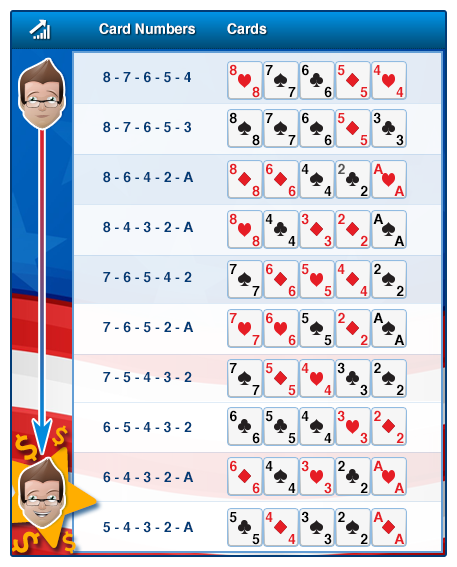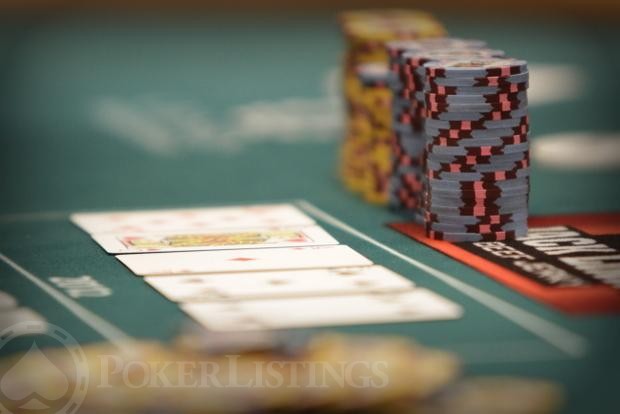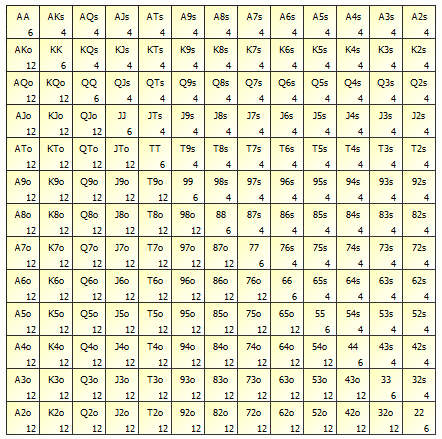- How Many Starting Hands In Omaha Baseball
- Omaha Starting Hand Rankings
- How Many Starting Hands In Omaha Poker
- How Many Starting Hands In Omaha College
- Omaha Starting Hand Chart
Online Poker » Poker Strategy » Omaha » Starting Hands
From my experience playing poker, I have to be quite honest here. Even with all the various kinds of poker resources available to players such as books, online training programs and various strategy articles, I am still amazed when I see players sit down only to play every single hand they are dealt. And whenever they are questioned about their wonderful array of starting hands, the excuses are endless; 'there were two face cards, one of them was an ace, they were connected, both were suited.'
You know, I suppose this is an arguably reasonable strategy since these players are bound to catch a hand at some point. Ok, yes, I am joking. Playing every hand has to be single handedly the reason for the downfall of so many player's bankrolls.
This major leak is only amplified when players sign up to play Omaha or Omaha 8 or better since players are being dealt four cards instead of two. The possibilities seem endless then and players seem to find any reason possible to be involved in a hand.
How to play Omaha; Starting hands. As with any poker game you need to be selective with your starting hands. Hands which might look good in Texas Holdem will just get you into trouble in Omaha. For instance getting 2,2,2,2 would be the worst possible starting hand because anything will beat it. We’ll also examine some good Omaha/8 starting hands along with hands that are playable but where some degree of caution should be exercised. Unfortunately, one cannot expect to be dealt a powerhouse hand on every deal. Powerhouse Omaha/8 Starting Hands. This is my favourite starting hand in Omaha/8 since it gives top pair, two nut flush draws. Making strong hands is relatively easy in PLO, so it is preferable to play hands that can. Learn more about Omaha Hi/Lo. The Best Starting Hand in Omaha Hi-Lo Hands Down! The best hand a dealer can put in front of you in an Omaha Hi Low game is AA23, especially if the ace and the deuce are suited, and the other ace and 3 are also suited.
Well, that ends now. What I have done below is highlight the hands that players need to focus on playing and the hands that need to be thrown away in our Omaha and Omaha 8 or better starting hand guide.


Hands to Play in Omaha/Omaha 8 or Better
How many Omaha starting hands are there? Omaha has 16,432 starting hand combinations if we ignore the suits. If we'd include the suits, there would be 270,725 possible combinations for your four hole cards in Omaha poker. Even the best PLO bookscan not cover this many hand combinations in their recommendations.
One of the most important things to keep in mind when playing Omaha or Hi/Lo is that this game is about the 'nuts.' Since there will be so many potential draws out there, players should always play for the nut high or when applicable, the nut low. So, first let's look as some solid Omaha Hi hands and then we'll take a look at lo starting hands.
How Many Starting Hands In Omaha Baseball
Omaha Hi
When playing Omaha players need to keep a few things in mind. To begin with, it is important when choosing a starting hand that you are starting a hand that is giving you the most possible outs possible. Let's look at a couple examples:
• Ad-Ah-As-Ac -Bad Hand
• Ad-Kd-As-Ks -Best Hand
Ok, so many of you may be wondering, why would 4 aces be bad to have as starting cards? Well, when choosing a starting hand you want to start with a hand that is going to give you the most outs possible to the best hand. While a pair of A's is a strong hand, 4 A's in the hole doesn't do you any good because now they aren't available for outs. Does that make sense? This will also apply to having 4 flush cards in the hole as well. Those would be two less flush outs that you have to draw to.
Now, a pair of Aces and Kings in the hole is a great hand and in fact, when they are double suited they are arguably the best starting hand in Omaha. This is because you have both a pair of aces and kings to use in the case you hit trips, there are multiple outs to nut straight and flush draws and these are 4 cards that no one else will be able to use as outs. Aside from a pair of aces and kings double suited, here is a short list to get you started:
• A-A-K-K Double Suited
• A-A-J-T Double Suited
• A-A-Q-Q Double Suited
• A-A-J-J Double Suited
• A-A-10-10 Double suited
• A-A-9-9 Double Suited
• A-A-x-x (x=any card)
• J-T-9-8 Double Suited
• K-K-Q-Q
• K-K-J-J
Ok, there is a top ten list to go by when you sit down to play Omaha Hi. The most important thing to keep in mind is that you want to draw to the nuts and have the most outs to do so. A great example of this would be the fact that J-T-9-8 ranks higher than K-K-Q-Q; there are more possibilities with a hand like J-T-9-8 double suited than K-K-Q-Q such as straights and flushes.

So, always be sure you are starting with these types of hands, preferably double suited, and that should make your life much easier in Omaha Hi.
Omaha Hi/Lo
When I first got started in Omaha Hi/Lo, I thought it was exactly the same as Omaha Hi except now you can chase both the Hi's and Lo's. Sadly, I was mistaken; and here is why.
The goal in Omaha isn't to just win just the Hi half of the pot or just the Lo the half, but to 'scoop' the entire thing. This is done by having both the best hand that qualifies for both. To put this quite simply, this cannot be done with just a Hi hand because Hi cards cannot qualify for a lo. On the other hand, a Hi/Lo win is quite achievable starting with a Lo hand because you are already drawing to a low but if you hit a straight or a flush, then you can qualify for the high as well. This is very important to remember. Now, here is a short list of starting hands for the Hi/Lo games:
• A-A-2-3
• A-A-2-4
• A-A-2-5
• A-A-3-4
• A-A-3-5
• A-A-4-5
• A-2-3-4
Here is a good list to get you started. I didn't include the high hands because they are listed above and to be quite honest, those really are mediocre hands in Hi/Lo and should only be played when you have position and are in a pot with as few players as possible. Again, the lo hand can draw to both Hi/Lo pots and Hi can only draw to Hi.
Lastly, it is important to avoid medium pairs and straights such as 7-8-9-10 or something similar because you would simply be catching the higher end of a Lo draw and the lower end of a Hi draw. This is quite dangerous and more times often then not, you will find yourself being second best.
Starting Hands in Omaha
Omaha Starting Hand Rankings
When getting started in Omaha or Omaha Hi/Lo it would be in a player's best interest to use our starting hand guide above and not deviate too far from it for a while. Omaha is a 'nuts' game and the sooner you have that memorized, the better off you will be. If anything else, just remember that in terms of starting hands in Omaha or any poker game for that matter, 'less is more.'
Best Starting Hands in Omaha Hi Lo
Omaha and Omaha Hi Lo is a much more complicated game then Hold’em simply because you have a wider range of starting hands seen by players due to the additional cards and combinations players can make. If you’ve never played Omaha and not quite sure what we’re referring to you can read our “How to Play Omaha Guide” which will help you with the basics of the game including format.

How Many Starting Hands In Omaha Poker
Since Omaha and Omaha Hi Lo use four hole cards, it’s absolutely critical that you understand the starting hand requirements in both versions. Making poor decisions on which hands to play and which hands to fold will ultimately cost you your bankroll. Although you’ll find plenty of beginners do end up falling for some of the more common omaha myths when choosing their starting hands.
Below you will find general outline to the starting hand requirements in Omaha Hi Lo. Omaha Hi Lo allows you to play for both the hi and low pot and because of this the starting hand requirements in Omaha 8 vary significantly from Omaha Hi since the goal is to be able to play for and win both pots. The starting hands below are dependent on situation, although you may not be able to bluff your way through this game, you can pick up a few additional big blinds through position and restricting your starting hands. Remember two things – the game is made up by strong hands and you need to play for both pots if you plan on coming out ahead.
Premium Starting Hands in Omaha High-Lo
How Many Starting Hands In Omaha College
The best starting hands in Omaha Hi Lo include:
1. A-A-2-x
2. A-A-3-x
3. A-2-3-x
4. A-2-4-x
5. A-2-x-x
6. A-3-4-x
7. A-A-x-x
While the chart above gives you a general outline of the best starting hands in Omaha Hi Lo, you do need to realize that it is still quite broad as the ‘x’ represents nearly any other card. A suited hand is significantly stronger than a non-suited hand even if they both fall in the same category. Suppose you have the option to play A-A-Q-K rainbow or A-A-2-K suited. The obvious choice of hand would be the later since your able to play for high and low, while giving you a chance at a flush, full house, or straight for hi hands. A tip to keep in mind when determining your hand strength in Omaha Hi Lo using the chart above is that the majority of cards 5 – 9 are essentially worthless. They can be used to pick up a few blinds when in position or playing against a loose table.
Omaha Starting Hand Chart
Ten of the Best Starting Hands in Omaha High-Low
These hands are considered the top hands in Omaha Hi Lo:

1. A-A-2-3 Double-suited
2. A-A-2-4 Double-suited
3. A-A-2-3 Suited
4. A-A-2-5 Double-suited
5. A-A-2-4 Suited
6. A-A-3-4 Double-suited
7. A-A-2-3 Non-suited
8. A-A-2-2 Double-suited
9. A-A-3-5 Double-suited
10. A-A-2-6 Double-suited
Playable Starting Hands in Omaha High-Low
Below is a summary of hands that are playable starting hands in Omaha Hi Lo
A-A-2-x
A-A-3-x
A-A-4-5
A-2-3-x
A-2-K-K
A-2-Q-Q
A-2-J-J
A-3-4-5
A-A-x-x
A-2-K-Q
A-2-K-J
A-2-x-x (suited Ace)
A-3-K-K
A-3-4-x
2-3-4-5 (This hand is dependent on the Ace hitting the flop. If the flop doesn’t show an Ace you should fold)
J-Q-K-A
T-J-Q-K
K-K-Q-J
Q-J-T-9
2-3-4-x (Another hand that depends on the Ace. If no Ace hits the flop, fold the hand on first bet).